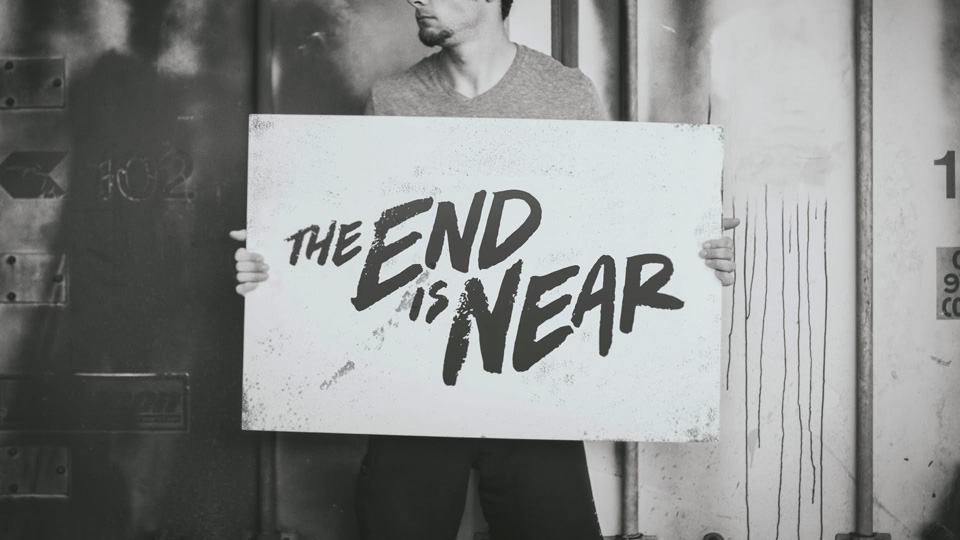
Back in early 2008, I was sitting in the Bronx with some of my progressive colleagues who were contemplating a local pastor who they all adored for his social justice-oriented outlook. Up for discussion was his Passover sermon, and the concept of Jesus’ resurrection. “Do people really believe that?” one of them asked. This led to hours of discussion where I argued that, yes this is more than a metaphor to most Christians and where everyone else laughed at my naivety.
A year after the 2016 presidential election, my friends realized that many Christians believed stories far more intense than that. Trump’s ascendance has been marked by an ongoing plea for the good ol’ days when America’s greatness was defined by the exploitation and oppression of non-white working people who used to know our place and forgot it in the Obama Era.
One of the more common themes that surfaces in interviews with voters behind the right-wing upsurge refers to the current moment as preceding what they see as the “end days” — the apocalyptic period referred to in many religious texts, but most frequently quoted from the Bible by American evangelicals. In order to build a society that works for everyone, progressive movement leaders will have to craft strategies that speak to the better values of churchgoers vulnerable to these messages and deeply engage them in shaping a future they can see themselves in.
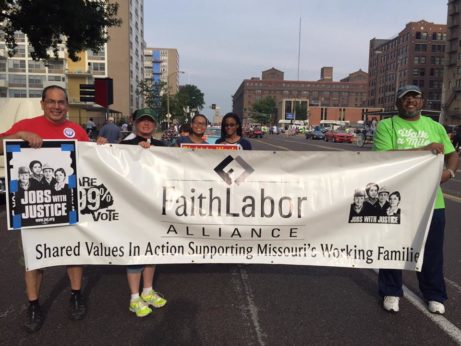
Recently, Michael Kruse interviewed Trump supporters in Johnstown, Pennsylvania for a piece in Politico — curious if the lack of improvement under the new administration had changed their minds about him. Of course it hadn’t. Most were less interested in Trump’s policy decisions and more “energized by his bombast and his animus more than any actual accomplishments.” But even they did not think Trump could fix what they see as the larger problem, best illustrated by Del Signore in the same article when he said, “Just looking around, and putting two and two together, a little bit of business savvy, a little bit of street savvy, a little common sense, a little bit of education, you kind of deduct different things… I think we’re going to see the end of the world in our generation.”
Many religious conservatives have expressed similar sentiments — even before the elections — in books such as Strangers in Their Own Land, where some individuals were quick to see a company’s careless actions in polluting a critical river that led to the cancer deaths of several family members as simply a sign of the end days.
The question we have to ask is, what are these individuals motivated by? Do they want to speed up the arrival of Kingdom Come? Are they securing their special place in heaven by limiting the freedoms of those they see as unworthy? Or are they motivated by something more sinister — throwing one final grenade at the whole system?
The answers to these questions help discern which of these individuals might still be reachable by a more hopeful approach. While easy to write off these viewpoints as crazy or fanatic, successfully remedying the gross inequality that’s spread throughout the globe and thus building a more just society for all of us require us to have a real approach to recapturing the imagination of at least some of them.
Waiting on the apocalypse
In addition to rising inequality and an overall insecurity, the growing “end days” narrative was also fueled by what some saw as an attack on the superiority of white Christian men. Every right or freedom extended to exploited communities becomes another validation of their fear of extinction.
In Kruse’s Politico interview, several individuals expressed their extreme disdain for the football players who kneeled in support of unarmed Black people murdered by police, blatantly referring to them and the NFL as “N*##ers For Life.” But not all of the individuals who subscribe to the “end days” narrative are this vile. How much someone is motivated by one over the other provides the basis for determining which segments of the “end days” bloc are persuadable to act on their more shared economic interests with the larger working class.
Starting with those who are not reachable, there are people who see the end of white supremacy as the equivalent of the end days. A society not based on the superiority of white people is ungodly, and thus represents the end of the world. The number of churches spreading the pervasive rumor that Obama is the Antichrist demonstrates this. Within this section of believers, some just want to end it all. The American-born “suicide bomber” has a gun and uses it to shoot up churches, schools, concerts, and other public spaces.
Others seek to prevent or slow down the apocalypse by preserving white supremacy. Jeff Sessions, in a speech to the hate group known as the Alliance Defending Freedom (ADF), illustrated this approach. Adele M. Stan translated one portion of his remarks in an American Prospect write-up, noting, “In his coinage of the phrase ‘immanentize the eschaton,’ William F. Buckley, who never said in two syllables what he could say in twelve, was speaking of that combo-concept, meaning that it wasn’t government’s job to make things nice for people by granting them their civil rights and feeding the starving poor. To do that would create Heaven on Earth, which would necessarily bring about cosmic extinction.” This section of the Right is lost to us.
Making this world a better place as long as we’re here
However, there are those who still have (or at least desire) some hope that the future can be better for them — those who, as Bill Fletcher, Jr. articulates, “are conservative but are not prepared to do away with democratic institutions.” For these people, validating their economic frustrations while clarifying our shared self-interests against common, corporate enemies could motivate them to act more in their shared interests with people of color, women, Muslims, and other exploited communities.
Accomplishing this requires two things of us. First, it requires a direct conversation about white supremacy. Second, progressives and the Left must strategically engage individuals affiliated with organized religion.
Confronting white supremacy has often proved difficult for many leaders. Far too often when confronted with embedded structural and blatant racism, movement organizations clam up, not wanting to deal with it head on for fear of alienating white neighbors who quietly disagree. And yet the 2016 elections were a sobering reminder of what happens when we avoid the issue of race — the silent “hard hat” majority transforming the legislature, the judiciary, and the executive branch into a five finger give-away for corporate interests.
But racism is not an insurmountable challenge. Despite buying into the easy, racist rhetoric of the Right that makes them fearful of extinction and scapegoats everyone who is not a white Christian man, these white men and women are actually suffering. And if progressives can trust in working people’s innate ability to struggle and grow over issues of race when organized around our shared values, we will see success.
One memorable example of this shows up in Lane Windham’s book, Knocking on Labor’s Door. In it, Tim Honeycutt, a worker at Cannon Mills in North Carolina during the 1970s, acknowledged that he was actively racist in high school, having participated in a “race riot.” But when organized around his shared values and economic goals with Black workers in his plant, he supported the union.
While organizations have made more attempts to build strategies that confront white supremacy, the Left is still fairly allergic to religion. According to the Pew Research Center, nearly 75% of Americans are religious — mostly Christian. So building a majority movement of any kind must include large numbers of people who identify with a faith tradition —and a better understanding of how these traditions motivate them.
This includes appealing to the more hopeful and accepting values of the faith, those that have been leveraged throughout the course of American history to improve people’s lives and build a more just society. This may be one of the only approaches that can combat particularly pervasive trends such as the “prosperity gospel,” which associates God’s blessings with your level of financial tithing, or other evangelical trends that claim God’s justice has been done after a terrible tragedy because the individuals impacted “weren’t living right.”
Such an approach certainly helped most of the country understand and align with the concerns of the Civil Rights movement over previously held religious beliefs that said Black people were inhuman. Many organizations and churches are already beginning to revisit these approaches, spending more time attempting to understand the motivations of religious communities and aligning with our shared values for equality, fairness, self-determination, and acceptance. In other words, hope…and the belief that the future will be better.
Ending the world as we know it
Not everyone who falls victim to the “end days” narrative is without hope. They have simply lost sight of what “a better world” might look like, and maybe more importantly, where they fit into it if not “on top.”
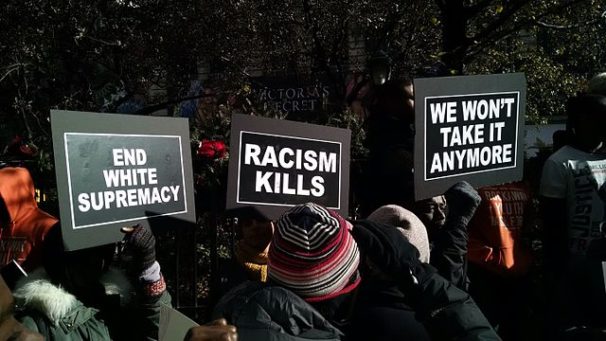
It’s not as if everyone who suggests doomsday is near is locking themselves at home to drink Kool-Aid and die. On the contrary, they’re still raising kids, teaching children, and building homes that they hope their future descendants will eventually inherit. This is not the behavior of someone who has completely given up on the world.
It’s certainly not fair to let these individuals continue voting, spending money, and impacting our communities based on a demented understanding of the world they live in. At the same time, it is not fair of us to them to deny them the opportunity to see themselves in the more egalitarian future progressives seek to build, to be heroes in their own narratives. We don’t have to agree with their outlook to engage people like this. Our movement must take these families into account when strategizing on how to shape the just future we all deserve.
Besides, the end of the world as we know it does not necessarily have to be a bad thing. If the “end days” signals an end to white supremacy, an end to exploitation, and an end to senseless state violence, then bring it on! As the beloved Bronx pastor articulated in his Passover sermon when referring to what motivated him to fight for a better world for all of us, he just said he only sought to make real on Earth as it already is in Heaven. And you would have to have a pretty sad perception of Heaven to think that was a bad thing.

MOST POPULAR TODAY

High Court essentially bans demonstrations, freedom of assembly in Deep South

Zionist organizations leading campaign to stop ceasefire resolutions in D.C. area


U.S. imperialism’s ‘ironclad’ support for Israel increases fascist danger at home

UN warns that Israel is still blocking humanitarian aid to Gaza




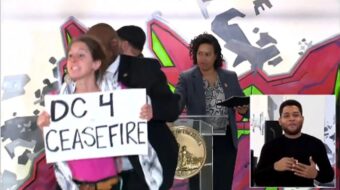
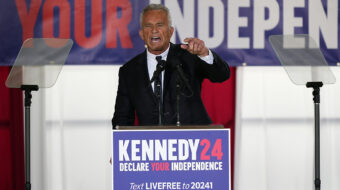
Comments